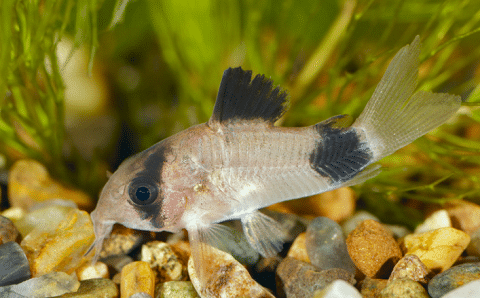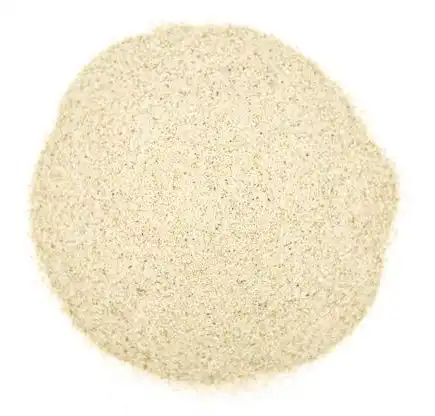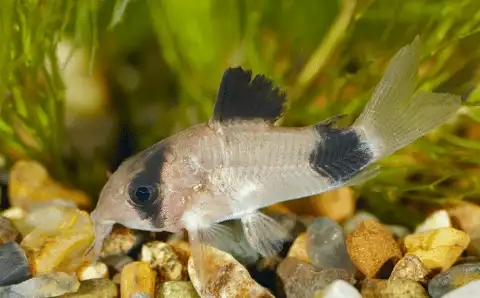Thank you for visiting! By the way… any links on this page that lead to products on Amazon and other stores/partners are affiliate links Aquarium Store Depot earns a commission if you make a purchase.
A Panda cory is a great fish for anyone looking for an easy to care for freshwater fish. This guide will cover everything you need to know about keeping a Panda cory happy and healthy in your home aquarium. We’ll discuss diet, tank size, water conditions, and other important factors to consider when owning this lovely fish. So if you’re ready to learn more about the Panda cory, keep reading!
Key Takeaways
- Panda corys are one of the most popular freshwater fish available due to their resemblance to the giant panda with their black and off-white markings.
- The panda catfish can bring excitement to the bottom of planted community tanks and are compatible with many other South American fish species.
- These aquarium fish are easy to keep, fun to feed, and moderately easy to breed.
An Overview
| Scientific Name | Corydoras panda |
| Common Names | Panda corydoras, Panda cory, Panda cory cat |
| Family | Callichthyidae |
| Origin | Peru |
| Diet | Omnivore |
| Care Level | Easy |
| Activity | Active |
| Lifespan | 5 to 8 years |
| Temperament | Peaceful |
| Tank Level | Bottom |
| Minimum Tank Size | 20 Gallons |
| Temperature Range | 72 to 78 F° |
| Water Hardness | 3 to 12 dH |
| pH Range | 6.0 to 7.5 |
| Filtration/Water Flow | Slow to moderate |
| Water Type | Freshwater |
| Breeding | Egg Scatterer |
| Difficulty to Breed | Moderate |
| Compatibility | Community tanks |
| OK, for Planted Tanks? | Yes |
What Are They?
Panda corys are a type of true catfish in the Siluriformes order, though they have a much more controllable appetite than their larger relatives! These fish are scientifically known as Corydoras panda and have become increasingly popular in the freshwater aquarium hobby over the past several years.
Because of their popularity and somewhat more difficulty in breeding, panda corys are more expensive than other species of corydoras. On average, these fish sell for $5 to $20 for fully matured individuals; this definitely starts to add up as they are schooling fish that need to be kept in groups of at least 6 or more.
In addition, panda corys can be difficult to find at local fish stores due to demand and hobbyists often need to purchase them online.
Are They Rare?
Panda corys are difficult to find at local fish stores, but why?
Panda corydoras are relatively rare to find in nature. They come from limited areas of the Amazon in South America where you’re much more likely to find another species of corydoras first. Luckily, panda corys are now bred at the commercial scale which makes them much healthier and much more available to average hobbyists. The problem is that most stores sell out of them, and fast.
Over the past few years, panda corys have been in high demand. It is no secret that these fish are undeniably cute and everyone wants to have a school for the bottom of their planted aquarium. Just as soon as they become in stock at a store, they sell out even at their above-average prices.
Origin and Habitat
The panda cory originates from the upper regions of the Amazon River throughout Peru. There is some speculation that they have traveled to Ecuador, though this has not been fully confirmed.
In Peru, panda corys can be found in blackwater conditions as well as clear waterways. These rivers are seasonally fed by runoff from the Andes mountain range which temporarily lowers temperatures into the 60s. As we’ll see, panda corydoras prefer cooler water, though they have adapted to withstand the warmer tropical temperatures found in the home aquarium.
When spotted, these South American fish can be seen schooling in the hundreds or thousands over a soft sand substrate. They especially prefer areas with plenty of structures where they can hide and graze. Surprisingly, not much vegetation is found in their natural habitat conditions.
Appearance
Panda corys are arguably one of the cutest fish available in the aquarium hobby. If their name didn’t already give it away, these bottom dwelling fish are black and off-white, with markings that resemble a panda bear.

Panda corys have black masking across their eyes along with a black dorsal fin and spot at the base of the tail fin. The rest of their body is a tannish-cream color that can vary in intensity depending on the surrounding environmental conditions.
These fish stay small and only grow to about 2 to 2.5 inches. They have a typical corydoras shape with a short body, high dorsal fin, and short barbels near their mouth. Their small proportions and black markings definitely make them one of the most desirable freshwater fish available.
In general, female panda cory cats are larger and have a more rounded belly in comparison to males.
How Long Do They Live?
On average, panda corys live for 5 or more years. Though small, these fish live a remarkably long time with some hobbyists reporting upwards of 10 years. This is especially great as these fish are more expensive than their relatives and aren’t the easiest to breed in the home aquarium!
Care
Though these fish might seem hard to keep due to their price and availability, they are no harder to keep than any other species of corydoras. Most beginner hobbyists can steadily care for panda corys with more experienced hobbyists having no problems at all.
Here’s how to keep your school of panda cory cats happy and healthy!
Are They Hardy?
Yes! Panda corydoras are hardy fish. They’re not the hardiest beginner fish of all time, but they will readily adapt to most aquarium conditions. That being said, these fish do best when added to a mature aquarium with stable water parameters and microflora and fauna living in the substrate.
Do They Clean Fish Tanks?
Though panda corys like a mature tank, they will not keep it clean. These fish are not members of the cleanup crew and will not eat pest algae, fish waste, or rotting food. Instead, they will need to be fed alongside all the other fish in the aquarium. Panda corydoras should never be added to the aquarium to treat a pest algae problem. They will not fix it!
Aquarium Setup
Panda corys are active fish that love to school. In bigger groups, they can be seen swimming back and forth across the front of the tank, using their barbels to sift through the substrate for food.
To make your panda catfish feel at home, make sure to leave plenty of open space in the front of the aquarium. Foreground plants can disrupt the flow of the school, causing them to separate and even stress out in extreme cases.
Plants and decorations may be placed throughout the aquarium to give your fish relief from intense lighting and for places to hide. Though panda corys will swim in full lighting, they definitely prefer some dimmed conditions through floating plants or botanical tannins; in their natural habitat, they are often found swimming on leaf-littered floors.
Panda corys are jumpers and should be secured with an aquarium hood.
Tank Size
Due to their activity level and schooling behavior, panda corys do best in a long tank as opposed to a tall one. A small school of about 6 panda cats can comfortably fit in a 20 gallon long aquarium, though they especially thrive in larger setups.
Not only do longer tanks give pandas more space to swim, but these aquarium fish also regularly go to the top of the tank. Having less distance to travel to the surface of the water definitely helps them navigate their surroundings better.
Water Parameters
Panda corys are relatively hardy fish that can adapt to a large range of water conditions. However, they should never be added to an uncycled aquarium.
In the wild, this fish species is regularly exposed to fluctuating, cooler water temperatures. Most fish in the aquarium hobby have been acclimated to a tropical water temperature of around 78° F, but the panda cory is different in that it prefers temperatures closer to 72° F.
For many years, the panda cory has been successfully bred through captive breeding programs. This has eliminated the need to catch wild specimens while also adapting the species to standard aquarium conditions. This means that most panda corys will easily acclimate to tropical water conditions.
Still, it is best to ask the fish store about the conditions of the holding tank and to acclimate your new fish accordingly.
Filtration and Aeration
Panda corys aren’t messy fish, though their uneaten food can cause some water quality issues. These fish prefer a sinking food. Anything that isn’t found by your cory cats needs to be removed or processed by a filter.
In general, a hang on the back or canister filter that is rated for at least 2x the size of the aquarium will keep water parameters in check. These fish can and will happily swim against higher water currents as long as there are spots with less flow they can escape to. This means that powerheads can be used for additional water circulation.
The Best Aquarium Power Filter
The worlds best selling and most reliable power filter on the market. Unchanged for years because it's so reliable and versatile
Aeration is usually not necessary, though an air stone via an air pump can be used to increase dissolved oxygen levels and to help keep fish waste and food off the substrate.
Lighting
As mentioned before, panda corys can tolerate high lighting intensities as long as there are places for them to hide. Their natural environments are usually blackwater conditions, which means that the water column is stained brown from organics. This can be recreated by introducing liquid tannins or Indian almond leaves into the aquarium.
Floating plants may also be used to create places of shaded refuge throughout the aquarium.
Aquatic Plants and Decorations
Panda cory cats are a very popular addition to the freshwater planted aquarium, but their natural waterways actually lack much vegetation at all. That being said, these fish love weaving in and out of live background plants. It should be noted that they may uproot new plants or loosely planted plants as they sift through the substrate.
Otherwise, panda corydoras appreciate rocks and driftwood where they can hide together.
Tank Maintenance
This corydoras species isn’t any more susceptible to poor water quality than other corydoras species, so weekly or biweekly 25% water changes are the standard. However, these fish like to eat sinking foods and they might miss a few pieces. To help prevent uneaten food from rotting, it’s strongly recommended to regularly use an aquarium vacuum to clean the substrate.
Filtration should be gently rinsed out with aquarium water at least once a month.
Substrate
Panda cory cats will change color based on the substrate they’re kept on; a darker substrate will cause more intense colorations, but a lighter substrate will compliment the colors of the fish better. A dark substrate will also help dull lighting intensities.
More importantly, a sand or fine gravel substrate should be used when keeping corydoras. Not only do sand and fine gravel keep your cory from getting injured, but these substrates are also easier for your fish to search for food and for hobbyists to keep clean.
Natural sand is excellent for bottom feeder fish to forage around in.
Community Tank Mates
On top of their appearance, panda cory catfish are a favorite due to their compatibility. These fish are perfect for the bottom of a community tank!
Here are some of the best tank mates to keep with panda catfish:
- Tetras
- Rasboras
- Danios
- Betta fish
- Small gouramis
Panda corys are an especially popular addition to Amazon River biotopes. As many species of tetra originate from these same waters, hobbyists love mixing massive schools of cory and tetra together in a densely planted aquarium.
Though South American cichlids also come from these ecosystems, they are generally not good tank mates for panda catfish. Unfortunately, South American cichlids tend to be too aggressive and territorial for an inquisitive group of corys.
Other hobbyists prefer to keep panda cats with betta fish (Betta splendens). This might seem like an unlikely pairing, but that’s because it is! This pairing of an aggressive betta with a school of active yet peaceful corys shouldn’t work, but it has been proven to be successful. That being said, not all betta fish are tolerant of such active tank mates so caution is definitely needed.
Last but not least, panda corydoras can also be kept with adult shrimp. There is always the possibility that panda catfish will eat shrimp and it is likely they’ll eat shrimp fry, but many hobbyists have successfully kept these two together.
How Many Do You Need?
The panda cory is a schooling fish that needs company to thrive. These fish will not do well on their own and it’s never a good idea to only get 3 or 4 of them. Instead, a school should be made up of at least 6 fish; it is difficult to tell males from females so the group will inevitably be mixed.
Many hobbyists like to keep dozens of these fish and they surely show their appreciation by forming tight schools.
Food and Diet
Feeding panda corys is one of the best things about owning these fish. This corydoras species is eager to eat anything fresh they come across!
Panda corys should be given a variety of live, freeze-dried, and frozen foods including brine shrimp, bloodworms, and mosquito larvae. Bloodworms are especially fun to feed as they dig into the substrate causing a feeding frenzy!
These fish are omnivores and will appreciate a selection of meaty foods as well as plant and vegetable matter. Blanched vegetables may regularly be offered on top of an algae pellet or wafer. To keep costs low, a high-quality sinking fish flake or pellet should be the staple of the diet.
If you find that food is being eaten before it makes its way to the bottom of the tank, then it might be necessary to target feed lower in the water column.
Breeding
If your aquarium is set up to your fish’s liking, then panda corys will readily breed in the main display. Otherwise, breeding can be moderately difficult.
It’s strongly recommended to breed panda corys in a separate breeding tank for a more controlled setting. These fish are egg scatterers that don’t provide any parental care, so they will willingly eat their own eggs and fry.
This breeding tank should be set to around 75° F with gentle filtration and plants or a spawning mop. If you are unable to identify the males from the females, then it’s recommended to place a group together. Otherwise, one breeding pair may be spawned (video source).
Corydoras are generally seasonal spawners that wait for the wet season. If you aren’t having success, try again during a cooler season, increase oxygenation levels, and perform more water changes. Be aware that corys take a few years to mature before they’re ready to reproduce.
If you are successful, panda corys will lay their eggs in areas of high flow around the aquarium. At this point, the adults should be removed. The eggs will then hatch within several days.
Baby panda corys should be given microscopic foods until they’re ready for a larger selection.
Where To Buy Panda
The best bet to finding a healthy group of panda corys is to shop online. Unfortunately, overnight shipping is expensive but this seems to be the most reliable method for obtaining panda corys right now. If you purchase from the link below, you can use promo code ASDFLIPPROMO for a discount at checkout!
A small cory fish that does well in shrimp tanks. Grows to 2.5 inches in length
Final Thoughts
Panda corys are one of the most popular freshwater fish species available right now due to their absolutely adorable markings and active behavior. These energetic fish are easy to keep but bring a ton of activity to the bottom of the tank. They are also relatively easy to breed once conditions have been met, which can be quite profitable for hobbyists due to their high prices and limited availability.
- About the Author
- Latest Posts
I’m thrilled that you found Aquarium Store Depot! Here you’ll find information on fish, aquariums, and all things aquatics related. I’m a hobbyist (being doing this since I was 11) and here to help other hobbyists thrive with their aquariums! I adhere to a high quality Editorial Process and Review products with real life field usage and practical analysis.








